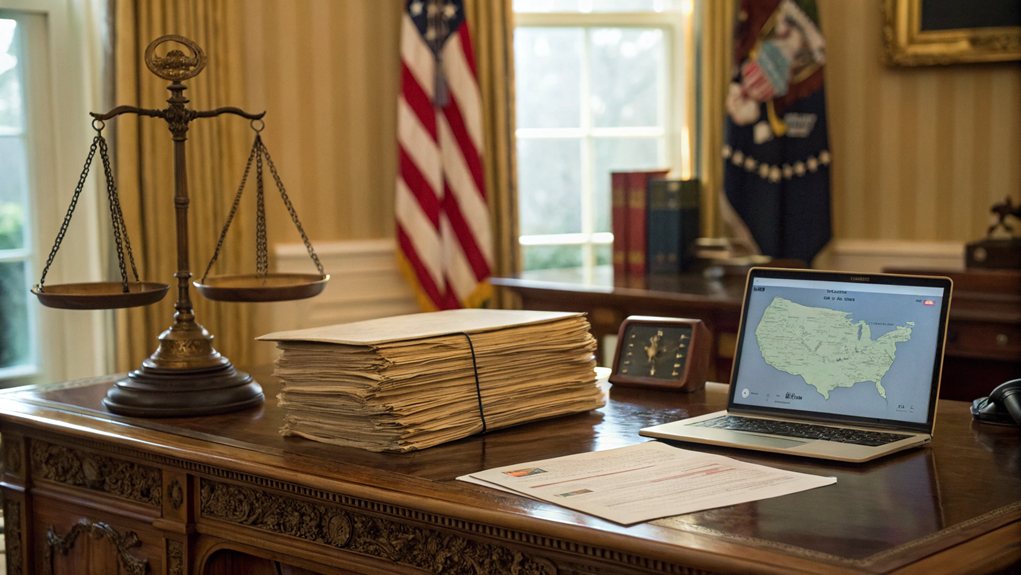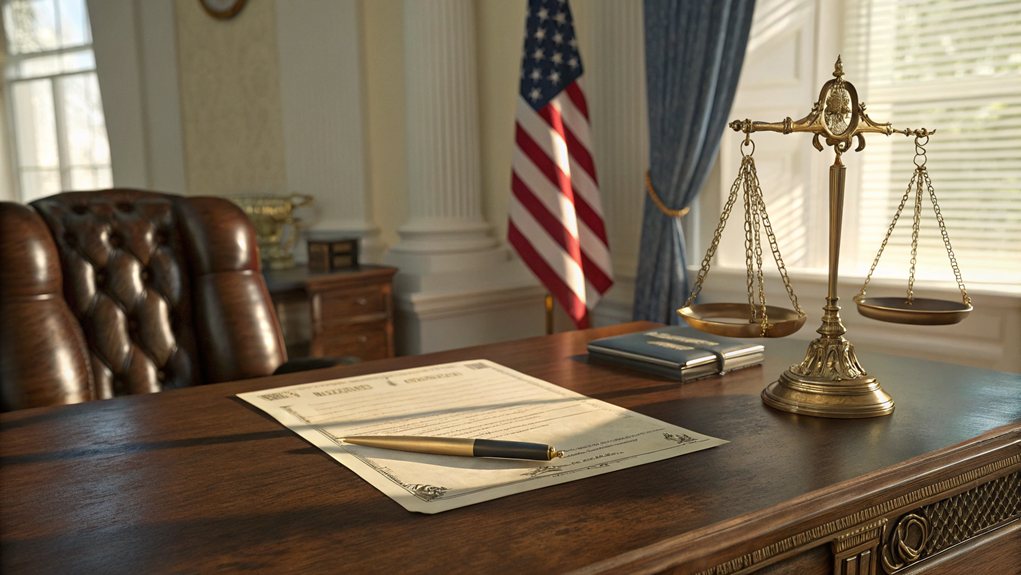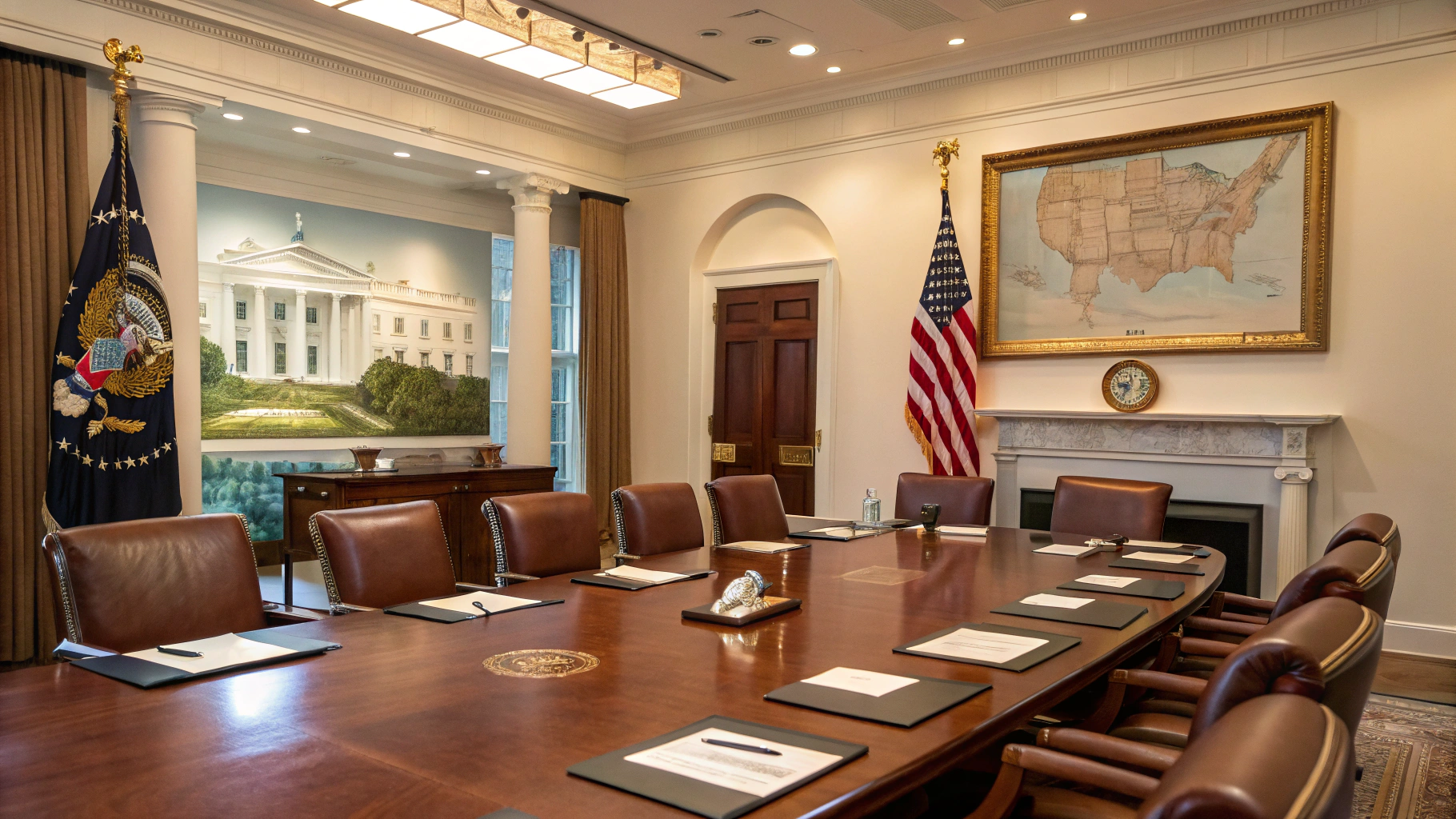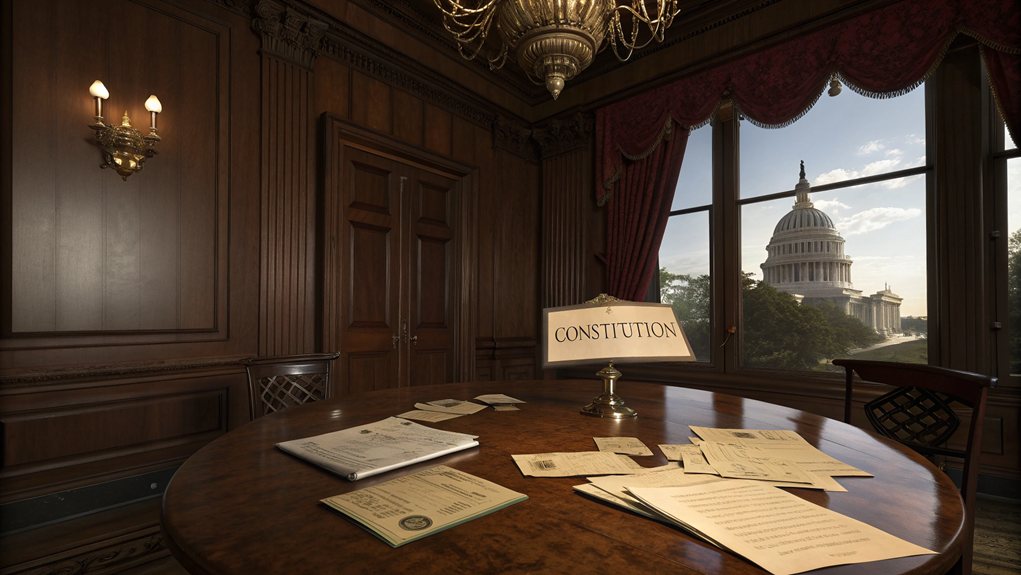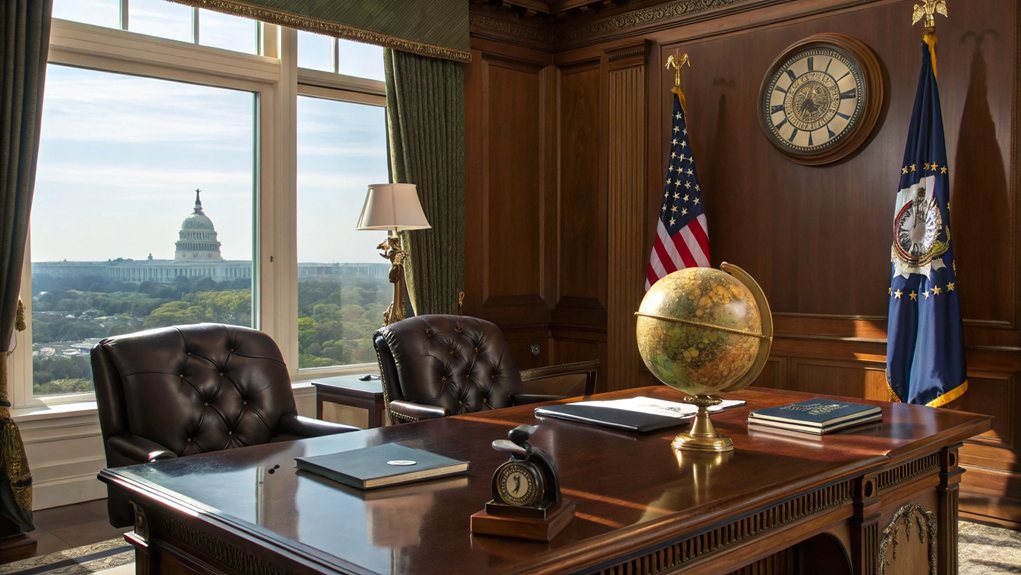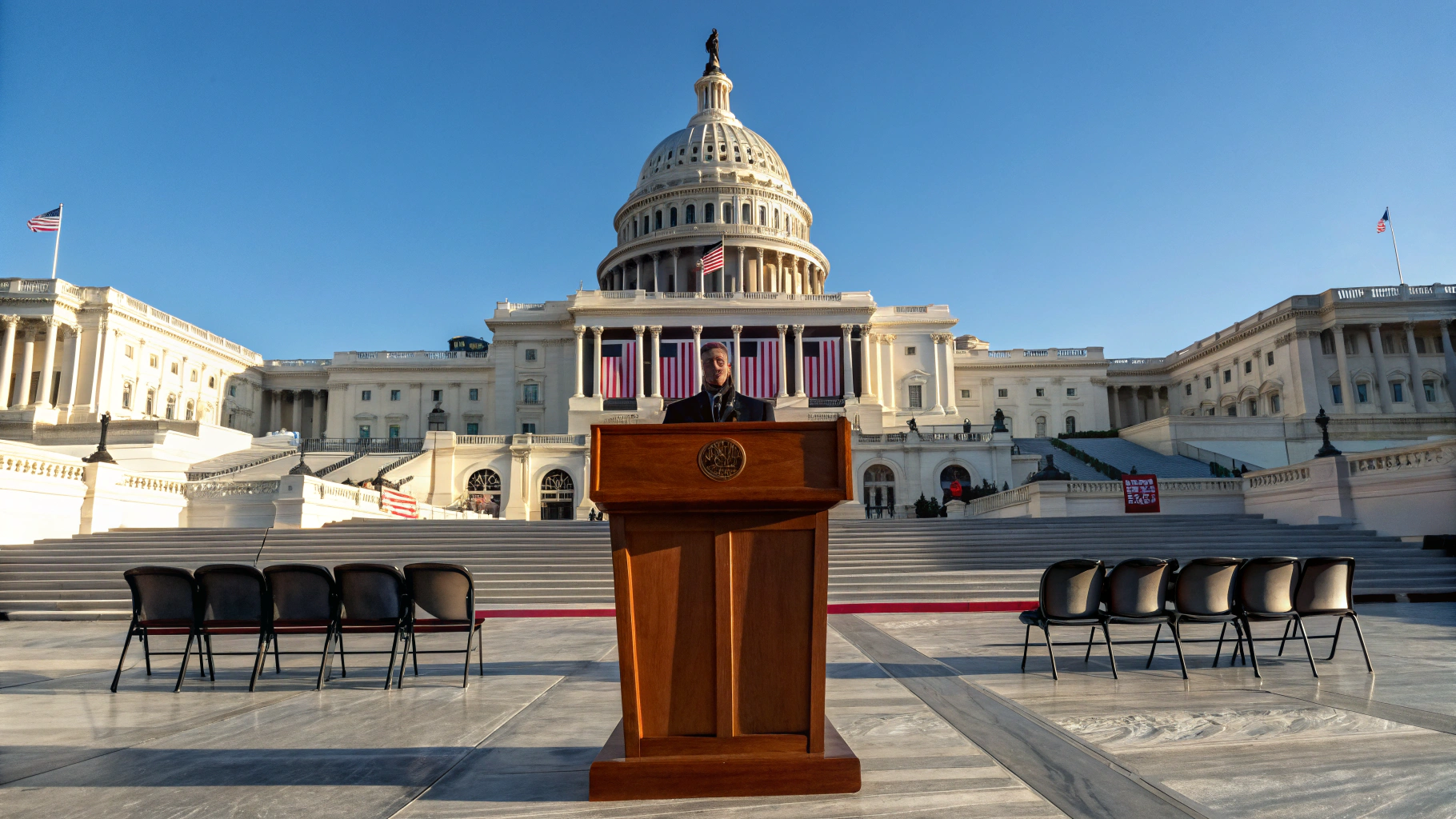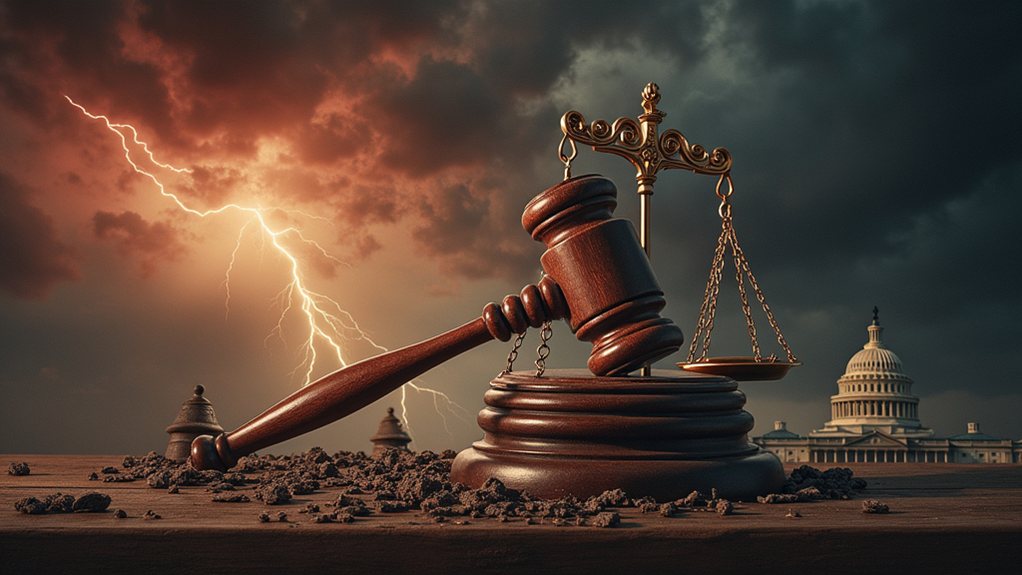Presidential emergency powers are a wild card in the U.S. government. Established in 1976, they let the president act fast during crises. Sounds great, right? But here's the catch: these powers come with a gray area and often sidestep Congress. Over 130 provisions exist, and yet, more than half of past emergencies still linger. Yes, the president can even suspend laws when necessary. Think it's all sunshine and roses? Stay tuned for a deeper look at the implications.
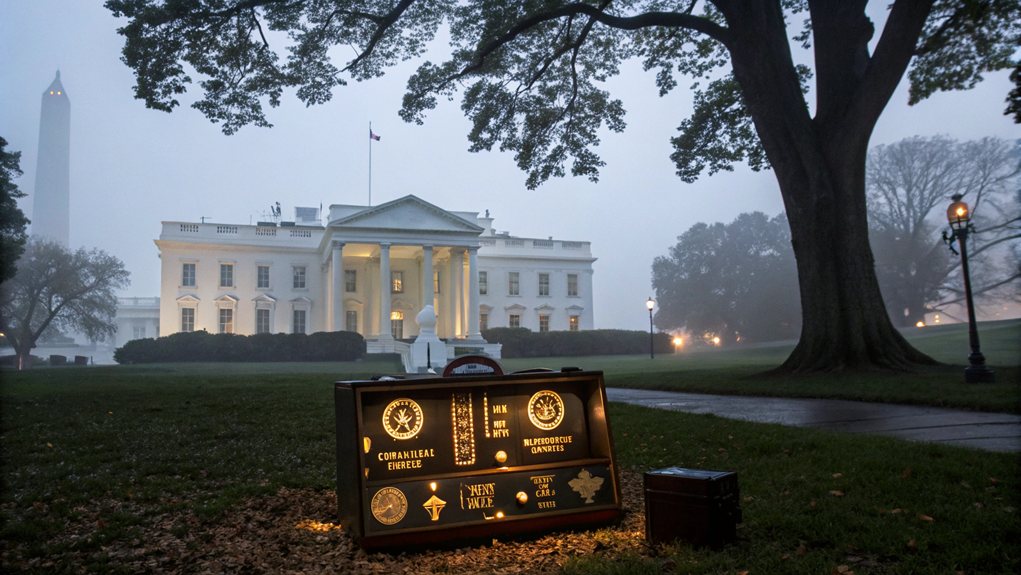
When a crisis hits, the president can flip a switch and declare a national emergency, activating a whole toolbox of powers that most people don't even know exist. It's like finding a secret stash of action figures as a kid—unexpected and a little overwhelming.
When a crisis strikes, the president unveils a hidden arsenal of emergency powers—surprising and a bit daunting!
The National Emergencies Act, put in place in 1976, lays the groundwork. It mandates the president to specify which powers they're using and notify Congress, but who reads the fine print anyway? With over 130 statutory provisions available, the president has a buffet of options at their disposal, many of which don't even need Congress's thumbs-up. Isn't that nice? The Constitution doesn't spell out these emergency powers explicitly, but they're implied. Think of it as a gray area where the executive branch can flex its muscles. Historical instances show that the balance between necessary authority and democratic norms is delicate and requires careful oversight.
Congress can put the brakes on an emergency declaration, but good luck with that—getting a two-thirds majority is like trying to herd cats. The judiciary cannot recognize emergency powers without Congressional grant, making it essential for the executive to work within legal boundaries to maintain legitimacy. The Constitution does not contain an emergency-powers clause, anticipating emergencies instead, which suggests that the framers intended Congress to be the principal lawmaking body, not the President.
Historically, presidents have declared about 60 national emergencies, with more than half still hanging around. The longest ongoing emergency? That dubious honor goes to a situation from 1979 involving Iranian government property. Talk about a long-standing headache.
Presidents wield significant discretion when declaring these emergencies, but, spoiler alert, they're not immune to scrutiny from Congress or the courts.
Emergency powers range from military deployment to economic regulation. The president can suspend certain laws or even control communications. Wow, just imagine the possibilities! They can also address public health crises, like COVID-19.
Yet, there's a catch: national emergencies need annual renewal, or they fade away like last year's trends.
Despite this powerful toolbox, checks and accountability exist. Congress can terminate an emergency, though it's easier said than done. The president must keep records and be transparent about their actions. Because who doesn't love a little oversight, right?
In a world where power can corrupt, understanding these emergency powers is vital.
Frequently Asked Questions
Can Congress Override Presidential Emergency Powers?
Congress can indeed override presidential emergency powers, but it's not a walk in the park.
They need a joint resolution, which sounds simpler than it is. The president can veto that, and then it's a two-thirds majority fight in both chambers. Good luck with that!
Plus, Congress often drags its feet on these matters. It's like they're saying, "Let's just let the president do what he wants." Not exactly a shining example of checks and balances.
How Often Have Emergency Powers Been Invoked in U.S. History?
Emergency powers? Oh, they've been invoked a lot. Historically, the U.S. has seen a rollercoaster of declarations. Once, there were over 400 laws in play. Now? Just about 136. Not quite a buffet anymore.
Sure, some presidents have milked emergencies for all they're worth, dragging them out longer than necessary. But hey, emergencies cover everything from wars to natural disasters. It's a mixed bag, but the drama never really stops.
What Specific Actions Can a President Take During an Emergency?
During an emergency, a president can pull a lot of strings.
They might deploy troops, both at home and abroad, to handle any chaos.
Need to mobilize industries? No problem.
Economic sanctions? Sure!
They can even redirect funds like a magician.
And let's not forget about public health measures.
It's a buffet of powers, with a side of congressional oversight.
Just remember, it's not a free-for-all—there are rules, sort of.
Are Presidential Emergency Powers Defined in the Constitution?
Presidential emergency powers? Not really laid out in the Constitution. Crazy, right? The Founding Fathers didn't spell it out.
Sure, they hinted the executive branch could act fast, but no clear-cut rules. Courts can't just hand over powers without Congress saying, "Go for it."
How Can the Public Challenge the Use of Emergency Powers?
The public can hit back against emergency powers in a few ways.
First, they can raise a ruckus—think protests, petitions, and social media campaigns.
Next, there's the legal route: lawsuits and challenges in court can shake things up.
Oh, and don't forget about the media. A little coverage goes a long way in shining a light on misuse.
Public opinion? It's a powerful weapon that can keep leaders in check.
